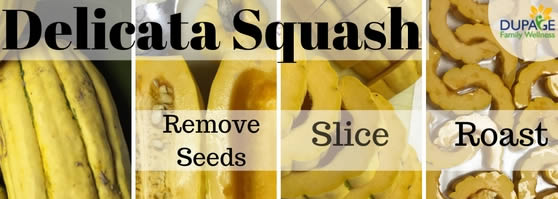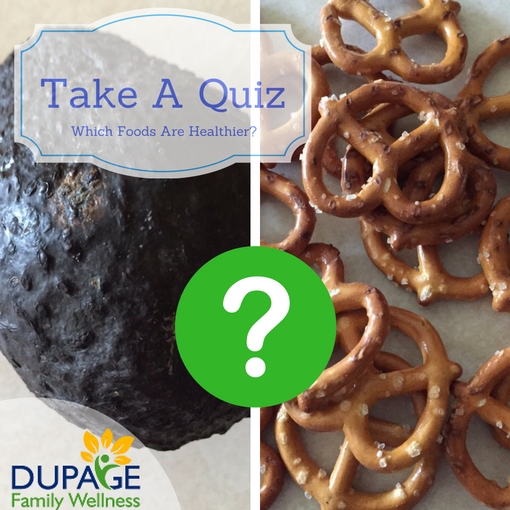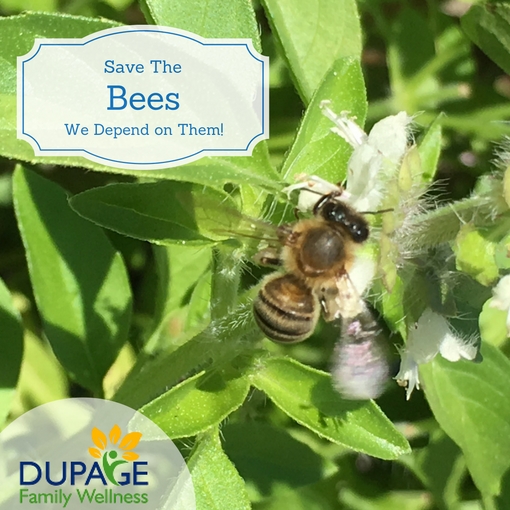
Balance is often overlooked, yet it is an important component of healthy movement. If we can’t balance, we aren’t stable. If we aren’t stable we don’t have a platform for our joints to move from. If we don't a platform to move from, our muscles become "tight" to try to create more stability.
How did we get into this situation?
Do you spend most of your day sitting? This takes very little “balance", especially if you are leaning back on the chair or couch. When you stand or walk, it is probably on flat ground with flat shoes. Most surfaces are cement, paved, or otherwise "flattened". Think about it .... How often do you challenge your body’s systems to balance? Our ancestors had a more adventurous life. They walked on non-uniform surfaces (e.g. fields, forests etc.) to perform daily outdoor activities and even used logs and stepping stones to cross rivers.
Benefits of Balance
Studies link balance training to injury prevention both in athletes and seniors. Balance training was found to be more helpful that stretching for injury prevention. Specifically it has been linked to reduction in ankle sprains and ACL injuries. In older individuals, balance is the key to reducing the risk of falls, which can lead to broken bones and other serious complications.
Whether you are young or old, balance is important for improving your stability as you move.
How Does Balance Work?
Your body has 3 systems that work together to help you balance:
- Nerve fibers called proprioceptors on the bottoms of your feet: These send signals up to your brain, telling it how much pressure is on each part of your foot. Your weight shifts accordingly to stay centered and stable.
- Vision: Your eyes focus on the horizon or a stable object, and send signals to your brain. These help the brain understand where the head is in space so that it can stabilize your body.
- Ear Canals: You have 3 semi-circular canals in your ears filled with fluid. One canal is in each plane. As your head moves, the fluid shifts and stimulates receptors to let your brain know where your head is at in space.
Balance is easiest when both feet are on a stable surface, your eyes are open, and your head is still. Removing any one of these systems (i.e. lifting a foot or standing on an unstable surface, closing our eyes, or moving our head around) makes balancing much more difficult.
Test Your Balance
Can you stand on one foot for 60 seconds without touching the other foot to the ground? If not, you need some practice! Even if this is easy for you, there are still ways to further improve your balance by only utilizing 1 or 2 of the above systems as opposed to all 3! Here are some tips.
Improve Your Balance
Fortunately, balance can be improved if you work on it! Like other forms of movement, the “use it or lose it” principle applies. If you don’t use the systems that your body has put in place for balance, they become less effective. Over time, your balance will get worse. The good news, is that you can turn this around.
Here are a few ideas for you to improve your balance:
- Practice Balancing: Use the principles above to challenge your body. Start with simply balancing on one foot on a stable surface. Once you are good at this and can do it for a full minute, try challenging yourself by standing on a folded blanket, pillow, grass or sand (unstable surface), closing your eyes, or moving your head around while balancing.
- Find Uneven Surfaces to Explore: Get out in nature and find some naturally unstable or narrow surfaces explore. This could mean hiking over roots and rocks. Anything that isn’t perfectly flat like a floor will start to challenge your body and force it to improve its ability to stabilize you. Even if you are in a parking lot you can practice walking on a man made balance beam such as a parking curb.
- Try a class or activity that gets your body doing alternative movements:. For example, in a dance class you control your body through all sorts of movements, often with only 1 foot on the ground. Other ideas include Tai Chi, Martial Arts, playing a game like raquetball, tennis, or pickleball.
Looking for a class? Here are a few local options that I love!
Zumba- While zumba isn't solely focused on balance, it does involve moving your body in all sorts of positions- many of which are on one foot. It is a Latin Dance workout class that feels more like a party than exercise! There is a local instructor named Tom that puts on by far the best Zumba class I've ever gone to! His energy is contagious he makes moving fun! If you haven't tried it, he teaches at Fit to be You- a new studio in Naperville!
Nia- I recently attended a Nia class. Nia is another dance fitness class that emphasizes joint mobility, stability, flexibility, balance, and body awareness. It is done barefoot (so all of the little joints in your feet can freely move and aren't restricted by shoes). It is totally adaptable for all age and fitness levels. It is taught at Warrenville Park and Wheaton Sports Center if you are local. If not, you can visit www.nianow.com to find a class near you!
So your challenge this week is to incorporate more balance into your life! This can be through simply practicing with the strategies listed above, exploring uneven surfaces, or finding a class to attend! I'd love to hear how it goes- or if you have any other ideas for improving your ability to balance! Chat with me on my facebook page!
-Dr. Jamie Thomure
There are fall vegetables are at the farmer's market now. Don't be afraid to try something new. I'll share 3 that I've tried this week.

Brussels Sprouts
A "tree" of brussels sprouts is the size of a baseball bat. It's a fun farmer's market find. Just cut the brussels sprouts off of the stem, cut them in half and roast. If you need more guidance on how to make them taste good. check out this post from a few months ago called Making Vegetables that Taste Good.
Butternut Squash
There are a few different ways I like to use butternut squash. If you haven't prepared it before, it might be intimidating. This You Tube video shows 4 ways to get started with a butternut squash, depending on how you are going to use the squash and how much time you have. You can use any of the methods in the video to prepare your squash for the following recipes.
1) Roasted Squash: If I want cubes of roasted butternut squash I peel and cube it before roasting (see the 3rd method in video for cutting demo). It is a delicious side on it's own or a tasty addition to a salad!
2) Mashed Butternut Squash- Mash the squash after it has been baked to soften it. I add ingredients like butter ( a few tablespoons), garlic, salt and pepper. If I'm feeling crazy, I add a little honey and /or cooked bacon! If you want a specific recipe with more details here is a good mashed squash recipe.
3) Roasted vegetable soup: Roast the squash as described above, cover with broth, and blend with immersion blender. The possibilities for seasonings and additions are endless. I typically use what I have on hand, and adding additional veggies and whatever spices I have handy. This week it was roasted carrots, red peppers, onion, and garlic in my soup. I seasoned it with cumin, paprika, chili powder, salt and pepper. If you want more guidance than this for soup making, here is one that I like.
Butternut Squash - Pear Soup
Ingredients:
- 1 Butternut Squash - roasted to soften it, and cut into small pieces.
- 3 ripe Bartlett pears - cored & chopped (other recipes peel, but I don't bother)
- 1 can coconut milk
- 4-5 cups chicken broth
- 1 onion - chopped
- 2 cloves garlic
- 1 t salt
- 2 t grated ginger
- 1 T curry powder
- 3 T Butter
Instructions
- Prepare squash into 1 inch chunks.
- Melt butter and add onion, garlic, curry powder and ginger in a large saucepan Stir about 5 minutes until onions are soft, but not brown.
- Add squash, pears, stock and salt. Cook over medium heat about 30 minutes.
- Using immersion blender, blend mixture until smooth.
- Stir in coconut milk.
Serve and Enjoy!
Delicata Squash 
Delicious! My new favorite because it it so easy to prepare, and has a great sweet taste. The half circles with scalloped edges add a fun shape to your dinner plate Follow the roasted vegetable directions and I promise you won't be disappointed!
Other delicata squash benefits:
- Easy to cut when raw - no struggle with tough skin.
- Eat the skin too - no need to peel.
These are a few simple fall recipes to inspire you to get cooking! Let us know if you try any of these recipes and how it turns out! If you are at the farmer's market, and find a vegetable that you don't know what to do with, post it on our facebook page! We'd love to help!
- Dr. Jamie Thomure

Take a Quiz- Which Do You Think is Healthier?
- Eggs OR Egg whites?
- Butter OR Margarine?
- Pretzels OR an avocado?
- Grass fed beef burger OR vegetarian meatless soy burger?
- Oatmeal OR a veggie omelet?
- 100 Calorie Snack Pack OR an Apple with Almond butter?
My Answers Have Changed Over Time!
If you had asked me a few years ago and again today, I would have given you completely different answers. Over the years I have done quite a bit of research into nutrition, and as I have learned more my opinions have evolved. Here are my answers today. Keep reading to learn what changed my opinion, and how this has improved my life. I've seen the same improvements in the lives of my patients.
Answers Now:
- Eggs- There are beneficial nutrients in the egg yolk, that you would miss out on if you just eat the egg white.
- Butter- Butter has a few very simple ingredients while margarine is highly processed and is full of damaged and denatured fatty acids including trans-fats that are harmful to our bodies.
- Avocado- I have learned how important it is to eat healthy fats and avocado is a great source. Pretzels on the other hand have long ingredient lists and almost no nutrients.
- Grass Fed Beef- Meat from a good healthy source is a great source of protein and omega 3 fatty acids. Processed meatless products, on the other hand, consist of a long list of highly processed ingredients. Soy itself makes people produce more estrogen that can throw off their hormone balance.
- Omelet- Eggs and veggies offer more beneficial nutrients than oats! They are also a good balance of fat, protein, and carbohydrate while oatmeal is pretty much purely carbohydrates.
- Apple with Almond Butter- While this might have more calories than the snack pack, it offers more nutrients (vitamins and minerals) and less artificial processed ingredients.
What is the difference? I care about eating good nutrients, and no longer worry about how many calories I eat.
Conventional Wisdom - What I Used to Think
About 8-9 years ago, I kept track of every single bite that I ate. I measured foods and counted every last calorie. I knew how many calories I was supposed to eat for my weight and activity level. I thought that if I burned more calories than I consumed, then I should lose those dreaded 10 pounds. I knew that the caloric value of a pound was 3500 calories, so if I kept a 500 calorie deficit every day, I should lose 1 pound/week. There were two problems.
- It was tedious and hard to track.
- More important, it did not work as expected! Even when the equation was tipped toward losing weight, the weight did not come off!
I could never understand why the simple calories in / calories out equation did not give me the results I expected. I also avoided fat (because it has lots of calories), and thought that eating too much fat would make me gain even more weight.
A Revelation - What I Learned
About 4 years ago, I went to a nutrition seminar series that TOTALLY changed my way of thinking. I learned that our bodies are MUCH more complex than a simple calories in / calories out equation to be balanced. The body is an amazing and complex system and food is used for much more than energy. What we eat causes HORMONAL CHANGES that impact whether we are in storage mode, or fat burning mode. Eating the right foods allows our bodies to function at its best and heal itself as needed. Eating the wrong foods causes other inflammatory reactions in the gut that can wreak havoc on our whole bodies. These inflammatory reactions cause everything from acid reflux to acne to heart disease and diabetes.
For example, let's look at how the body processes carbohydrates. Eating processed carbohydrates (breads, pastas, pretzels, tortillas, cookies, cake, crackers, chips, granola bars, etc.) spikes blood sugar. The body attempts to reduce it's blood sugar back to normal by releasing a hormone called insulin. This triggers the body to store the extra glucose (sugar) in fat cells. Since I ate these carbohydrates at every meal- and even as snacks between meals, I was constantly spiking my blood sugar, releasing insulin, and storing the extra glucose in my fat stores. While I thought I was eating a good low calorie diet, what I was really doing was starving my body of key nutrients (due to my lack of vegetable eating), and staying in fat storage mode. No wonder I had a hard time losing weight- I was eating too many carbohydrates to get my body into fat burning mode and use my body's fat stores as fuel.
What I eat now (and you should too!):
REAL FOOD! Foods that humans have been eating for thousands and thousands of years. Foods that our bodies have grown accustomed to processing. Nothing that was made in a factory (yes that means bread and pasta- even the whole grain kind). Nothing that has big long ingredient names you can’t pronounce. Nothing that was genetically modified (we’ll talk more about this a different day, but it’s way more common than you might think!)
- Vegetables- I eat as many as I want and am hungry for! No need to count anything. Ideally, they come from a local farmer and are in season. I try for at least 6 servings, 2 at each meal, sometimes more!
- Meat- Best from HEALTHY animals that got to eat their natural diets and walk (or swim) around while they were alive. I have some everyday- it is important for getting certain vitamins like B12. I try to get my meat by the whole animal and even eat the organ meat (containing so many good nutrients) and use the bones to make broth!
- Fruits- I eat 1-2 servings/day. I look for locally grown in season fruit when possible.
- Healthy fats- Like coconut oil, Real Butter (from healthy grass fed cows), animal fats, avocados, some nuts. Fats are a vitally important energy source. There are some fatty acids (like Omega 3s) that our bodies can’t make, so we HAVE to eat them. Eating fat does not make you fat!
Foods that I used to consider healthy that I avoid now: Fat free yogurt, skim milk, granola bars, pretzels, whole wheat pasta, whole grain bread, oatmeal, and processed soy/vegetarian substitutes.
The great thing about REAL FOODS is that there isn't a group of scientists trying to make the perfect combination of fat, sugar, salt and chemicals to make them addictive (the very reason it is hard to eat just one potato chip or oreo!). Mother nature doesn't use cheaper ingredients to improve the bottom line, or add chemicals to lengthen the shelf life. Real food is what it is. Eat as many vegetables as you want. If you eat more, you get more nutrients. You will stop because the natural fiber will make you feel full.
How These Changes Have Improved My Life:
• Lost Weight
During my senior year of college, when I was most serious about calorie counting, my weight was 172. My current weight is 160. The extra 10 pounds I was so worried about melted right off, and stayed off, when I gave my body better, "real food" ingredients to work with!
• Acne and Allergies Cleared Up
Before I also mentioned that eating processed foods leads to inflammation in our bodies. I suffered from seasonal allergies and acne as long as I can remember. I had no idea that both conditions were inflammatory in nature. Since I changed my diet. I have seen huge improvements in my skin and my seasonal allergies. I wish I would have known years ago that eating these whole unprocessed foods would help my skin to become clearer and reduce my seasonal allergy symptoms.
Obviously, in our fast paced society it can be hard to avoid all processed "food", The first step to becoming healthier is to understand what is healthy and why. As you learn more, you think about how food (or food like products) affects your body. It is not the CALORIES that are important, it is the NUTRIENTS.
Shoot me an email or chat with me on my facebook page to let me know how you did on the quiz, and if you learned anything from reading my story!
Dr. Jamie Thomure

There is a buzz about bees in the media lately. The bee populations have been declining. Why is this so important?
“If the bee disappeared off the surface of the globe, then man would have only four years of life left. No more bees, no more pollination, no more plants, no more animals, no more man.” --- attributed to Albert Einstein
Did you know that one in every three bites of food originates from plants either pollinated by honeybees or other pollinators (butterflies and moths)?
Although there is not one leading cause for the decline in the honey bee population, several recent occurrences have become the perfect storm and are being blamed for this sudden decline.
- Chemicals. The emergence and dramatic increase in the use of pesticides and herbicides has a detrimental effect on bees. The chemicals are ingested as the bees make their regular pollination rounds. A specific class of pesticides called neonicotinoids causes particular concern. These synthetic pesticides are commonly used in farming and home landscaping and are a featured ingredient in many standard brand name gardening products. Unfortunately, there is no label that a pesticides or insecticide may be harmful to bees, and the active ingredient has many different names including Acetamiprid, Clothianidin, Dinotefuran, Imidacloprid, Nitenpyram, Thiocloprid, Thiamethoxam.
- Electromagnetic radiation. Another modern day convenience, cell phone and wireless communication towers, has dramatically increased the amount of electromagnetic radiation in the atmosphere. This radiation is thought to effect the ability of the honey bee to navigate its way back to its hive. A study done at a German University found that honeybees would not return to their hive when cell phones were placed nearby.
- Global Warming. Scientists suspect that global warming has caused an increase in the population of mites, viruses, and fungi that are known to attack bee colonies. Furthermore,dramatic hot and cold temperature swings may interfere with bee populations accustomed to more consistent seasonal temperatures.
What is the impact?
A Whole Foods in Providence, Rhode Island demonstrated the drastic impact that the loss of honeybees and other pollinators could have on our food (see photos). They removed the food from their shelves that would no longer exist without these valuable insects. 237 of 453 products (52%) had to be removed. More than 85% of the plant species on Earth require pollinators to exist. Among the most popular produce items to be removed include apples, onions, avocados, carrots, mangos, lemons, limes, honeydew, cantaloupe, zucchini, summer squash, eggplant, cucumbers, celery, green onions, cauliflower, leeks, bok choy, kale, broccoli, and mustard greens.
What can you do? In order to turn this around, commit to being part of the change.
- Buy organic. Organic food is not only better for your health, it’s one of the simplest ways you can support the health of pollinating insects.
- Be conscious of the products you are using. There are many ways to solve lawn and garden pest problems without using harsh chemicals. Use google to find natural remedies.
- Garden. When you grow clean flowers and fruit, you provide healthy plants for bees and other pollinators to pollinate.
- Joelle Kurczodyna NTP

Every month I attend a seminar called the "Functional Forum", a meeting to help clinicians use the latest scientific discoveries to take better care patients with complex chronic diseases. Last week, the keynote speaker was one of my favorite medical doctors/authors.
I love attending talks like this. First, because I'm a bit of a nerd so it's always fun to learn new ideas. Second, because they inspire me. This talk confirmed that I am on the right track with the messages I am sending to all of you, which inspires me to keep it up!
Who was this speaker?
Terry Wahls MD. The author of The Wahls Protocol.
Why does she inspire me?
Dr. Wahls is a medical doctor who was diagnosed with Multiple Sclerosis (MS) in the early 2000s. She looked to experts for the best treatment possible for her disease. She went to the Cleveland Clinic, where doctors prescribed medication to suppress her immune system. To her surprise, she got worse. She knew that MS was a progressive disease, but she did not expect it to progress so quickly. Soon Dr. Wahls was limited to a tilt recline wheelchair, and could not support her own body weight.
Dr. Wahls decided that she was an intelligent doctor and there must be a better solution, so she went to the research. She found potential experimental drugs, but decided they would be too difficult to get quickly, and that they might not even work. Her next line of research was nutrition. Little do most people know that medical doctors have little, if any, training in nutrition. She found some studies on how certain nutrients might be helpful, but she did not know what foods contained those nutrients. She started using her body as an experiment, giving it as many nutrients as possible. Much to her surprise. her condition improved. In 1 year, she went from being in a wheelchair to bicycling 18 miles! She stopped taking the medication, and realized that the nutrients in real whole foods were healing her body! She was amazed at how the body can heal itself when you give it what it needs, and remove the junk that is getting in the way and causing the body to attack itself!
What did I learn at the seminar?
Dr. Wahls explained that autoimmune disease means that the body is attacking itself. but it manifests itself in different ways in different people:
- Multiple sclerosis: the body attacks the myelin surrounding the nerves.
- Diabetes: the body attacks the insulin producing cells in the pancreas,
- Psoriasis: the body attacks the skin,
- So many more: I have a list of well over 100 autoimmune conditions if you are curious about something specific!
Dr. Wahls is relentless to get studies done to show that nutrition protocols are effective. It has been an uphill battle because there are no big companies with financial interest in seeing this happen. She has finally received grant money to fund her research and the initial results are phenomenal!
She currently works at a VA hospital. She has been working with veterans who struggle from conditions like obesity, high blood pressure, high cholesterol, pain, post traumatic stress/traumatic brain injury, and sexual dysfunction. She has realized that the protocols that helped with her multiple sclerosis are also helpful for these veterans. The veterans that have complied with her protocols for 100 days have seen improvements with all of these conditions WHILE LOWERING their medications! That's right, they were able to take less pain medication, less blood pressure medication, etc- while having fewer symptoms! She has also been granted money to begin a comprehensive randomized nutrition study on MS patients.
So what does this mean for you?
First, it means I am re-inspired to keep telling you to eat real food (vegetables, meats, some fruit) and to ditch the crap (all things processed). I know that you might think I am a broken record, but it is so important for any condition or pain that you are struggling with. If you aren't giving your body all of the right ingredients and nutrients, you can't expect it to heal properly and perform the way it is supposed to perform.
Second, I was inspired by Dr. Wahls to be more direct with people who ask for my help. If you want to see real changes and improvements in your health. you might need to make some big changes! Dr. Wahls expects 100% compliance from her patients for 100 days. This seems like a big commitment, but when it is your health were talking about, you are worth it! Making big changes will get you real results which will inspire you to keep going.
If you are curious about the changes Dr. Wahls made to her diet,
watch her Ted Talk on You Tube.
Start thinking about changes you'd like to make.
If you are ready to make some changes, and need help figuring out how to get started, please Contact Me!
If you know anyone suffering from Multiple Sclerosis (MS) or any other autoimmune disease. please share this with them!








